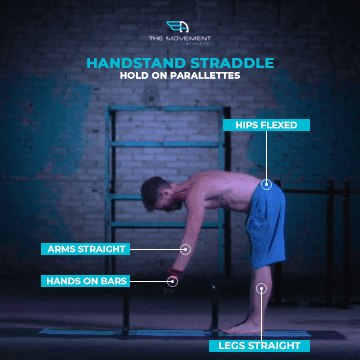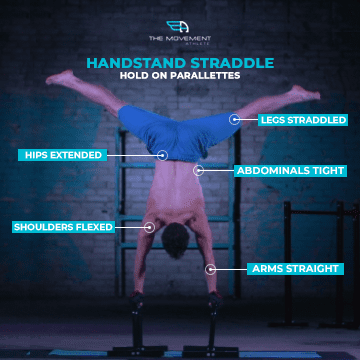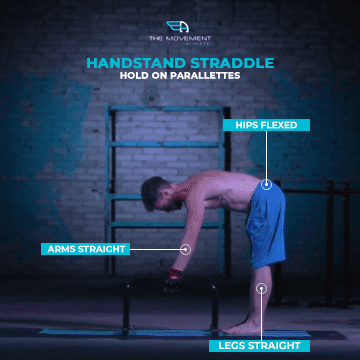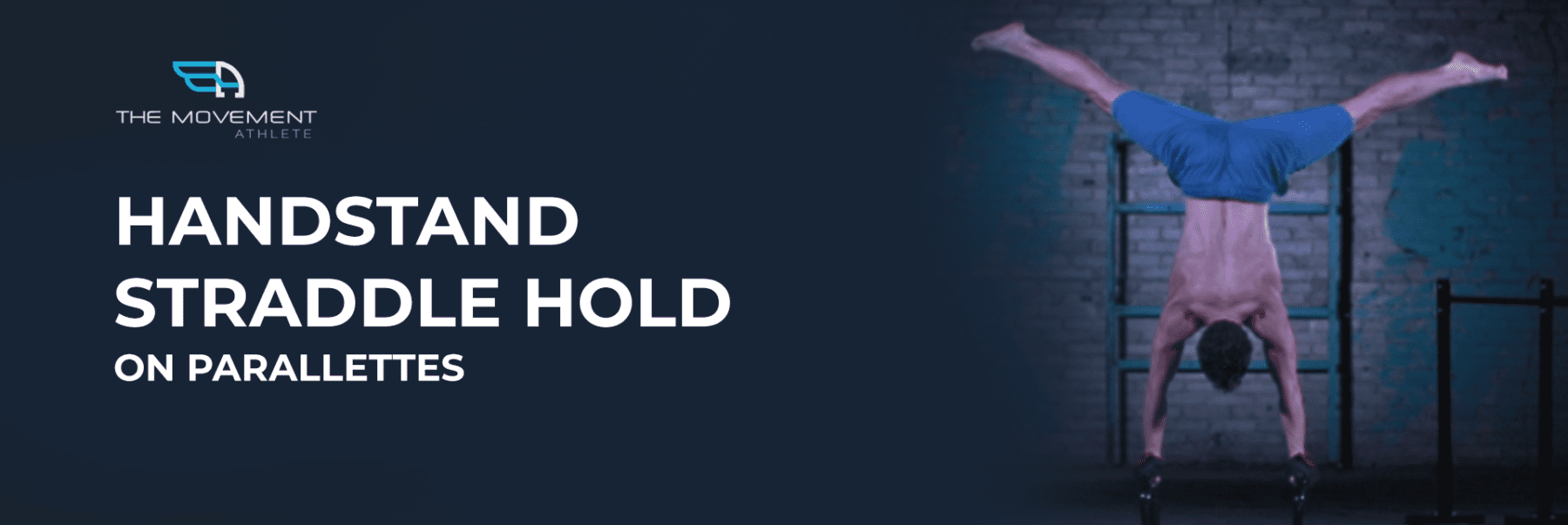
Join the tribe of Movement & Calisthenics Athletes – people just like you that are working with their own body weight to get strength, lose fat build muscle, recover from injuries and live their best lives!
Increase your handstand control by learning handstand straddle on parallettes!
A flat solid floor is an ideal surface you can first learn your handstand. It provides you good feedback to learn how to control the inverted position.
The next step to get more control is by moving to a different surface so you can do handstand virtually anywhere you want to.
With parallettes, your wrist works at a different angle relieving some pressure on your wrist. Adding a new form of stimulation on your arms and wrists. This is a great way to work on your handstand if you’re wrists always hurt after exercise.
Since you’re starting out at a new surface, it’s best to use the straddle position first. The straddle lessens the vertical force on your body and allows you more balance with your legs out.
In addition to control, handstand on parallettes helps you overcome the fear of doing handstand from a height. It’s ideal to choose a set of parallettes that’s relatively low so you can still jump into your handstand while building confidence and control to move to a higher surface.
HOW TO KNOW WHEN IT’S SAFE TO ATTEMPT?
You must have a solid base handstand before moving attempting this skill. The basic floor handstand lets you focus on the basic elements of the handstand such as alignment and control before moving to a more difficult surface.
Once you have a good grasp of the floor handstand, you can move on to the parallettes.
Summarized Benefits
- Strengthens shoulders
- Strengthen core muscles
- Improves straight-arm strength
- Develops body awareness and coordination
- Improves your confidence in handstand position
- Prepares you for more difficult handstand position on parallettes
- Strengthens radial and ulnar deviation of wrist
- Increases your confidence to do handstand in other (particularly higher) surfaces
How to Perform
- Bend over and place hands onto the bars.
- Lean forward placing weight in hands, and jump feet up into a handstand with legs straddled.
- Hold handstand position for specified time.
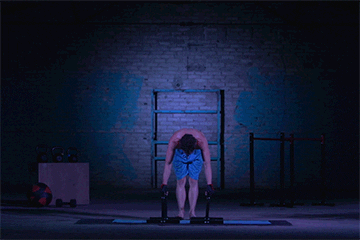
Keep in mind
Start low
Starting at a high set of parallettes will just give you a headache. It’s scary to get into your handstand and bailing out would still also be terrifying. Choose a low elevation of parallettes and just slowly move upward.
If you can press, the better
It’s not mandatory to have a standing press-to-handstand before learning at parallettes but it’s better to have much control of getting to your handstand. Pressing to position minimizes the risk of you falling forward which would be scary if you’re at an elevation. Pressing with control gives you confidence to get to your handstand even with the elevation and new wrist angle you are working with.
Coaching Pointers
Starting Position:
Arms straight
Hips flexed
Legs straight
Hands on Bars
Movement Position:
Legs straddle
Abdominals tight
Hips extended
Arms straight
Shoulder flexed and depressed
Finish Position:
Arms straight
Hips flexed
Legs straight
